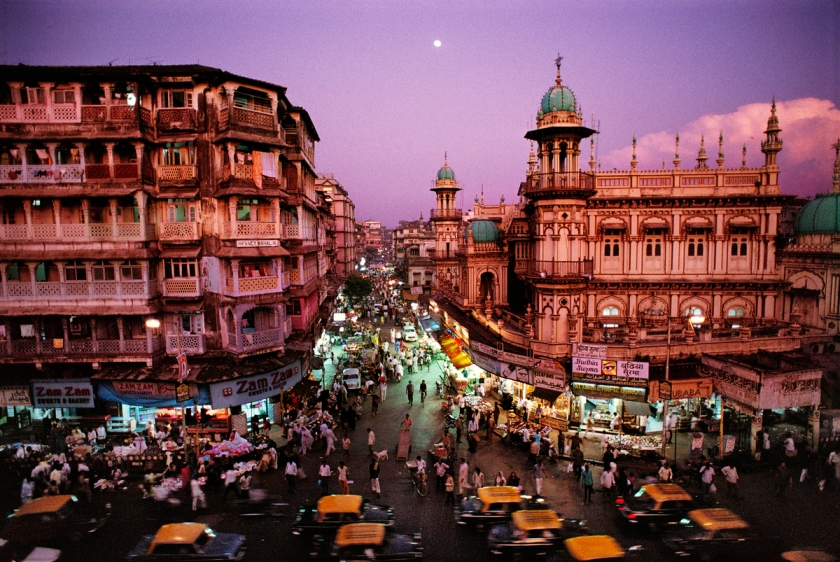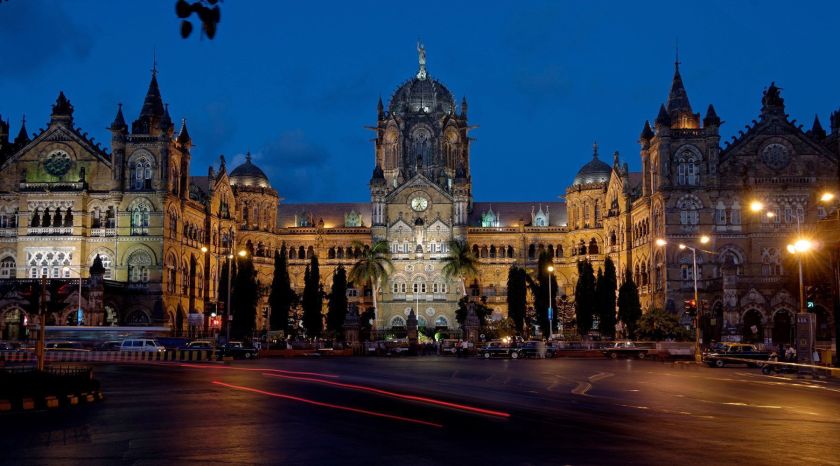The Taj Mahal Palace Hotel
Mumbai, Maharashtra, India
Mumbai Screenplays Contest
Great Screen Writers from the South
Literature’s Greatest Screen Writers
Rock stars, maharajas, and heads of state have stayed at the landmark hotel that overlooks the Arabian Sea.
Mumbai Screenplays Contest

The Taj Mahal Palace, a Mumbai landmark since 1903, is India’s most famous hotel and the very embodiment of opulence. A Victorian extravaganza that is an exotic mix of Moorish and Renaissance style, it gazes serenely over the Arabian Sea and has welcomed a host of luminaries, from maharajas to Mick Jagger.
Mumbai Screenplays Contest
Splendidly uniformed doormen usher locals and guests into the deliciously cool, gleaming, white-marbled interior of the elegant Palace Wing; the high floors of the 30-story Tower wing, built in 1972, offer views of the sea and the stately Gateway of India. The arched, harborside monument was built by the British to welcome King George V and Queen Mary in 1911 (the only visit to the Raj by a reigning monarch). It was also the point of departure when the last British colonialists left in 1948. From here, catch a breezy ferry ride for the 6-mile trip to Elephanta Island, where a complex of 6th- to 8th-century cave temples honoring the Hindu god Shiva are carved into the rocks. It is an excellent, leafy vantage point for a view of Mumbai’s skyscraper-studded skyline.
Mumbai Screenplays Contest
Decompress at the hotel’s Jiva Spa, with yoga, meditation, or any of the time-honored Indian holistic healing treatments that rejuvenate after a frenzied day of sightseeing. Join the stylish Mumbaikars (Mumbai residents) who come for high tea and desserts, like masala tea crème brûlée at the contemporary Sea Lounge or at the open-air Aquarius café overlooking the hotel’s legendary swimming pool. Or book dinner at one of the many fine restaurants, including Masala Kraft for all-time Mumbai favorites created at various cooking stations.

Mumbai Screenplays Contest
The Taj Mahal Palace was built by J. N. Tata after, it is said, he was refused lodging at one of the city’s hotels because he was Indian. The Taj Group—a sliver of the massive Tata Group, in its fifth generation of stewardship—now owns more than 60 hotels in India and abroad. The Taj was the target of a devastating terrorist attack in November 2008, during which 31 guests and staff were killed and hundreds injured. Heavily damaged by fire, the hotel was repaired within the year. A simple plaque serves as a memorial to an event that succeeded in bringing the people of Mumbai closer together while securing the hotel a place of honor in their hearts.
Mumbai Screenplays Contest
Info: Tel 91/22-6665-3366; in the U.S., 866-969-1825; http://www.tajhotels.com. Cost: from $275; dinner at Masala Kraft $40. Best times: Oct–Mar for most pleasant weather; Feb for dance festival on Elephanta Island; Aug for Ganesh Chaturthi festival; Oct–Nov for Diwali (Festival of Lights) on Chowpatty Beach.
A Place of Extraordinary Peace Where Everyone Is Welcome
_______________
The Golden Temple
Amritsar, Punjab, India
In the bustling city of Amritsar, India’s dazzling Harmandir Sahib, also called the Golden Temple, seems to float on an island in the middle of a serene lake whose name means “pool of nectar.” One of the country’s most beautiful buildings, the temple is the Sikh religion’s holiest shrine and one that welcomes everyone, irrespective of religion, race, or caste.
Construction of Harmandir Sahib began in 1574 on the site of the lake, which was believed to have healing powers, in order to house the book of holy scriptures. Since then, the three-story temple, connected by a man-made causeway, has seen many restorations and embellishments, including the addition of over 220 pounds of gold to cover the upper stories and an inverted, lotus-shaped dome in the 19th century. Signifying the importance of acceptance, the temple has open doors and balconies on all four sides, and the interiors are decorated with inlaid marble, carved woodwork embossed with gold and silver, and intricate mosaics. The atmosphere is both festive and serene. As with Muslims and Mecca, every Sikh hopes to visit the Golden Temple at least once in his life.
There is no organized worship, but during the day, the scriptures are chanted and hymns are sung from the Adi Granth (the Sikh Holy Book) beneath a jeweled canopy, while a small group of musicians plays an accompaniment. At night, thousands of worshippers line up for the Palki Sahib ceremony, when the holy book is returned on a palanquin to its resting spot.
No pilgrimage for Sikhs would be considered complete without a visit to the Langar, a giant communal dining hall run by volunteers, who feed more than 30,000 people daily for free—twice that during holidays. Stop by to experience the spirit of hospitality and equality that are central to Sikhism and that make a visit to Amritsar so special.
Where: 254 miles/410 km northwest of Delhi and 40 miles/64 km east of Lahore, Pakistan. Golden Temple: http://www.goldentempleamritsar.org. Where to stay: Ranjit’s Svaasa is a family-run boutique hotel in a 19th-century building. Tel 91/183-256-6618; http://www.svaasa.com. Cost: from $125. How: U.S.-based Asia Transpacific Journeys leads a 15-day trip through the Himalayas that includes Amritsar. Tel 800-642-2742 or 303-443-6789; http://www.asiatranspacific.com. Cost: $10,995. Originates in Delhi. When: Sep. Best times: Sunrise or late afternoon, when the golden domes are illuminated and reflected in the waters; Sep–Nov and Feb–Mar for pleasant weather; mid-Apr for the Sikh holy days, such as Vaisakhi.
Strictly for the Birds
_______________
Keoladeo National Park
Bharatpur, Rajasthan, India
White-throated kingfishers find sanctuary in Keoladeo.
Between the historic cities of Agra and Jaipur (see here and here) lies the diminutive Keoladeo Ghana National Park, aka the Bharatpur Bird Sanctuary. It has the reputation of being India’s (and perhaps all of Asia’s) best avian sanctuary, especially during the winter months, when its marshland attracts staggering numbers of birds arriving from Afghanistan, Turkmenistan, China, Siberia, and Europe. More than 400 resident and migrant species, including egrets, storks, herons, and cormorants, build over 10,000 nests annually, with the highly endangered Siberian crane occasionally making an appearance. Previously the private duck-hunting grounds of the maharaja, the park includes a plaque giving testament to successful hunts from the recent past, including a day in 1938 when a British viceroy bagged 4,273 birds.
The 18-square-mile park is car-free, navigable only by bicycle, horse cart, or rickshaw. The latter is the best mode for the novice ornithologist, as the rickshaw pullers have been trained by park management and are quick to spot birds. Remember to look down as well; pythons, porcupines, mongooses, jackals, civets, wild boars, nilgais (Asia’s largest antelope), and the endangered jungle cat reside here too.
The nearby Bagh Hotel is set on 12 acres of 200-year-old gardens and has resident naturalists who delight birders with their knowledgeable presentations and who lead guided tours of the park.
Where: 34 miles/55 km west of Agra. Visitor info: Tel 91/564-422-2777. The Bagh: Tel 91/564-422-5415; http://www.thebagh.com. Cost: from $125. Best times: Oct–Feb (after monsoons) for migratory birds and Aug–Nov for resident birds; early mornings and evenings at sunset for greatest bird activity.
Where Royal Concubines Watched the World Go By
_______________
Palace of Winds
Jaipur, Rajasthan, India
The architect of the palace, with its many perforated balconies and crown-like shape, also planned Jaipur city.
Pink is the Rajput color of hospitality, and Jaipur, capital of the desert state of Rajasthan, is known as the “Pink City.” It is a worthy home for Hawa Mahal, the five-story, salmon-hued “palace of winds,” built in 1799 and adorned with delicate floral motifs and fronted with honeycomb windows. The upper two stories (of five in all) are really an elegant façade, just one room deep but pierced by 953 windows from which the Hindu ladies of the royal household in purdah (concealment from men) could enjoy the breeze while viewing state processions or the parade of everyday life in the Old City below. In the late-afternoon light, the sandstone palace takes on a special glow. The building is just around the corner from the rambling City Palace complex, an exotic blend of Rajasthani and Mughal architecture that still houses the former maharaja and his family on a high floor.
To escape the teeming carnival of street life, repair to the exquisite Oberoi Rajvilas hotel, just a few miles outside of town, where the fantasy of Rajasthan’s princely life lives on. This 32-acre oasis of exotic pavilions, pools, open courtyards, and fountains, with a pink fortress at its heart, looks like a royal village that has always been here, although it was actually built in 1997, the first of India’s new luxury hotels. Relax in one of the teak-floored, ultraluxe royal tents, and visit the spa for an Ayurvedic shirodhara treatment. For Jaipur’s real-deal princely homes—historic digs redolent of the days of the maharajas, where overnight guests are welcomed—stay at the Samode Palace Hotel, the Samode Haveli, the Taj Rambagh Palace (for information on these see here), or any of Udaipur’s opulent contenders such as the inimitable Taj Lake Palace .
Where: 162 miles/260 km from New Delhi. Oberoi Rajvilas: Tel 91/141-268-0101; in the U.S., 800-562-3764; http://www.oberoihotels.com. Cost: from $675. Best times: Sep–Mar for pleasant weather; sunrise and late afternoon, when the palace glows; late Feb or Mar for the festival of Holi; Jul–Aug for premonsoon Teej Festival, dedicated to the goddess Parvati.





